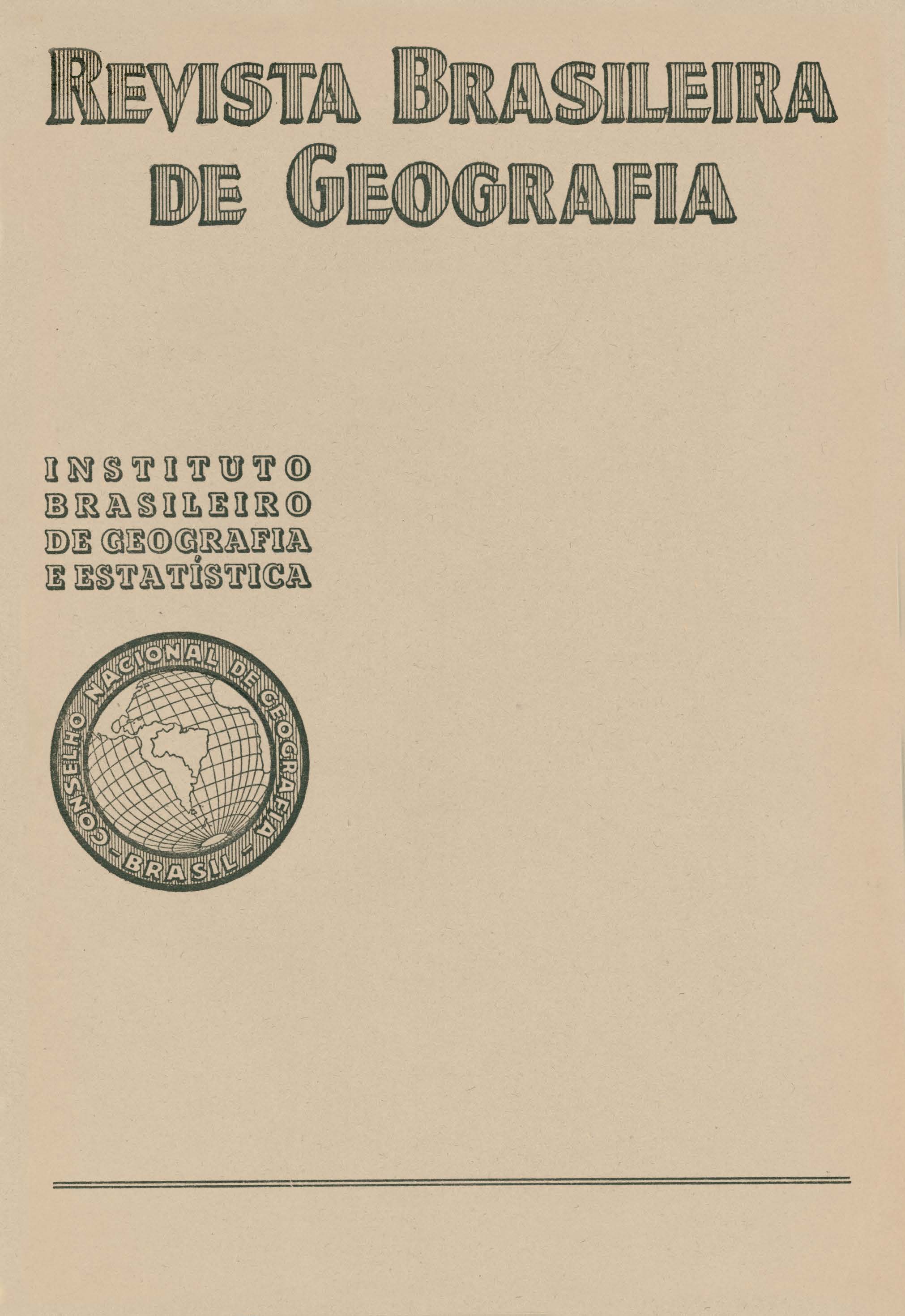Irecê : uma área agrícola insulada no sertão baiano
Palavras-chave:
Bahia; Irecê – BA;, Economia agrícola;, Geografia econômica;, Sertões;, Agricultura.Resumo
Irecê is a municpio (county and county town) in the back country of Bahia, on the plateau know as the Chapada Diamantina. Its outstanding features in the regional economy consist in a remarkably high agricultural output and the way the land is tilled with use of mechanized equipment, so that its demographic density is now higher than that of the neighbouring municípios.
It can be seen at once that real "agricultural island", exceptional both demographically and economically, corresponds to a limestone basin laid down in the Silurian on an Algonkian base. In certain places the limestone appears on the surface in outcrops of bare rock or else is fashioned by chemical weathering into sinkholes or caves.
As to climatic conditions, the Irecê area comes under the heading of the semi-arid type, with the predominant characteristics of the sertão. The area is mantled with a woody scrub forest, interspersed only rarely with cactaceae.
It should be noted that there is little in the way of an organized surface drainage pattern in the area. With the exception of the Rio Jacaré, one of the tributaries of the São Francisco no definitive watercourses can be located there. Seepage through the limestone tends to terminate in resurgence of the water elsewhere in lakes scattered all over the region. A search to discover the determinants that will explain the more intense tillage leads tot he conclusion that two natural causes are to be evoked to justify this development: the soil and the underground water.
Turning to the agrarian picture in Irecê, special traits are to be observed as regards techniques and systems of working the land. In spite of considerable variation in size, it may be said that the majority of farms are of medium area, ranging from 80 to 450 hectares (200 to 1100 acres). There is no relationship between the size of the farms and the farming system employed. Ali the landowners and tenant farmers or overseers use the same crop- raising techniques irrespective of the extent of the land cultivated. This is, however, by no means true of the management pattern of land development, the farms being worked directly or indirectly according as to whether they are small or large. Absentee landlords hand over their estates to a single individual to manage them. This form of working is known as a "society", and essentially it differs little from tenant farming.
The farmer plants all the crops that are likely to yield a profit, however small the arable area available for the purpose. This is his way of guarding against a possible failure of those that are more demanding as to climatic conditions, e. g. beans and corn, and can be offset by others that are more drought-resistant, such as castor-oil and sisal.
The level topography is suited to mechanized cultivation. Thus the use of the tractor- drawn plough is general throughout the municipio. Such mechanization is, however, recent and has been the growth factor of the agricultural output.
Farming in Irecê consists essentially of cash crops. These are grown in association, the plots being tilled for years on end with neither fallow nor fertilizer, which is a clear indication of the fertility of the soil.
There is no spatial arrangement of the farmlands on the on the estates. The location of living quarters depends very largely on geological features and the presence of subsurface water saturation. Houses draw closer to one another or are even grouped together around points where the water regains the surface, giving rise to rural settlements. Where there is no resurgence, but the water table is at a suitable depth for sinking a well, habitation also tends to concentrate. Isolated houses spread out over the tilled fields are not so numerous. Taken as a whole, land occupancy in Irecê is of the mixed tyxed type, with agglomerations interspersed with scattered housing.
Townships like Lapão and Gabriel and hamlets like Gameleira and Canal are centers of population, for they act as service centers for the surrounding farm area and enjoy a certain degree of economic independence in that they do not have to rely on the "city" or county town of Irecê for their supplies. Thus Irecê city shows no signs of growth to parallel the expanding economy of the area.
The development of farming in Irecê started in 1940 with the introduction of the plough, followed by the generalization of mechanization. Government agencies, above all the São Francisco Valley Commission, contributed to agricultural expansion with technical and financial assistance. However, it was only when a good road was built that this activity became lucrative, for this made for better marketing of the farm produce, throwing the region open to trucks coming from Jacobina, Feira de Santana and Salvador to pick up supplies in Irecê.
With the development of farming, the method of land use underwent a transformation, evolving from the rudimentary itinerant system to that of crop rotation which has now brought the fields into continuous cultivation without, however, resorting to fertilizers.
Finally attention is called to the importance of the rains for the crops, not only annual rainfall, but also the start of the rainy season being a matter of concern. Some suggestions are made on how to obtain better productivity for crop-farming in Irecê, and emphasis is laid on the necessity of buildings silos for grain storage increasing credits and making it easier to gain possession of the land.
It seems very likely that there are other areas in the sertão with the necessary physical conditions large-scale agriculture, and this calls for research work to be urgently expanded so as to evaluate the true possibilities of the Northeast in this respect.






